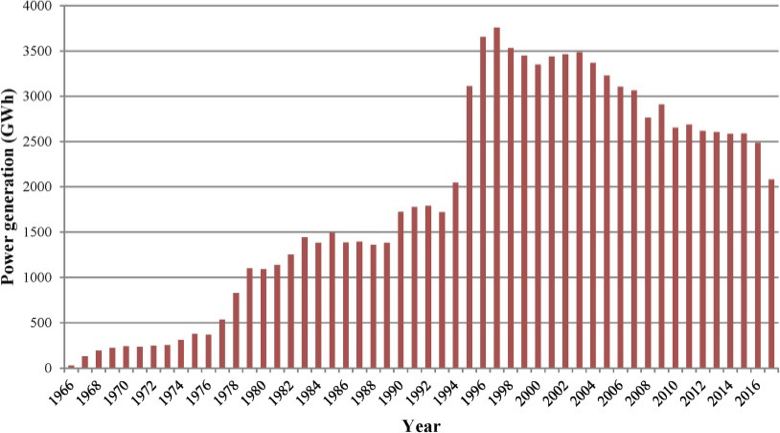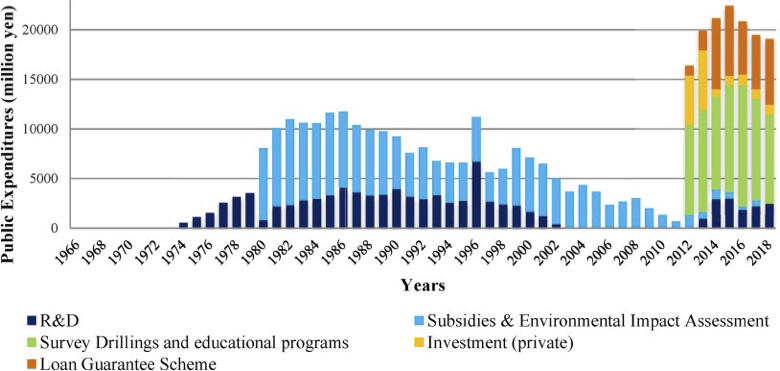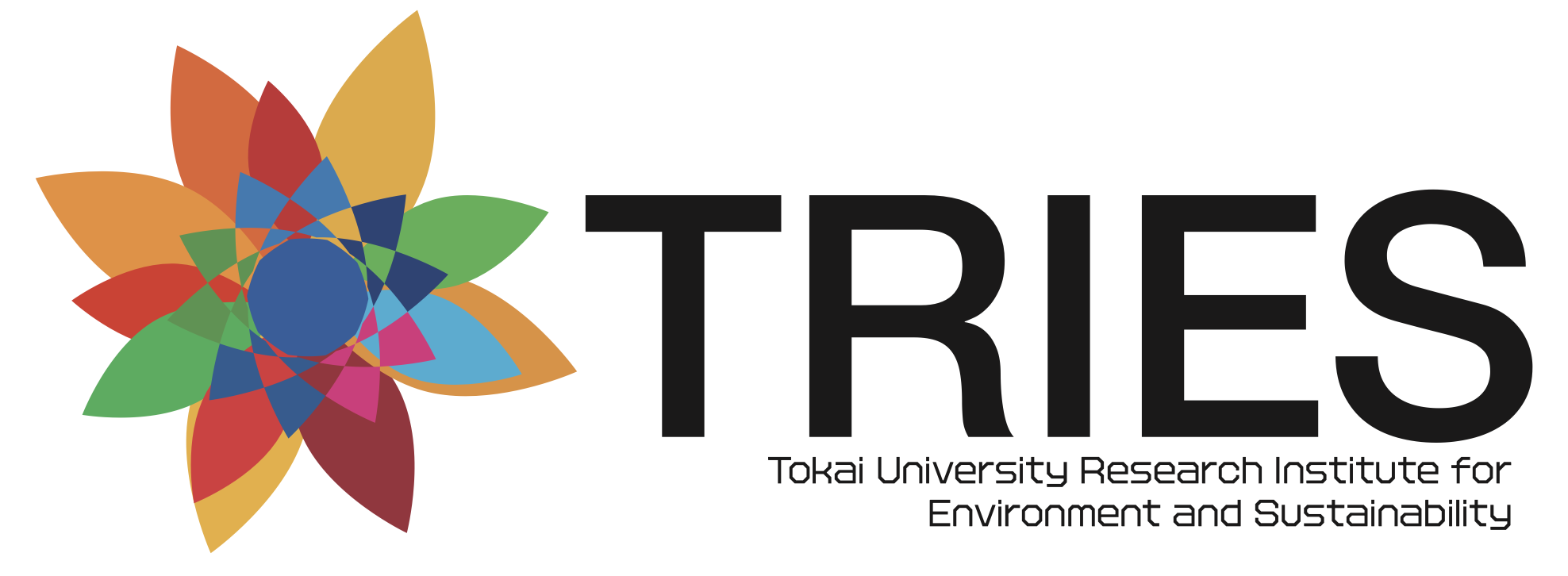Why geothermal energy is stagnating in Japan, despite the availability of resources and technologies?
02/03 2023
Author: Farhad Taghizadeh-Hesary
Taghizadeh-Hesary F., Mortha A., Farabi-Asl H., Sarker T., Chapman A., Shigetomi Y. & Fraser T. (2020) Role of energy finance in geothermal power development in Japan, International Review of Economics & Finance, 70: 398-412 (DOI)
1. Introduction and Background
After the Fukushima-Daiichi nuclear power disaster in March 2011, Japan found itself facing an energy supply crisis. Despite strong government support for renewable energy (RE), it appears that geothermal deployment is lagging, although Japan has the world's third-largest reserves of geothermal resources. To reach the objectives set by the Ministry of Economy, Trade and Industry (METI) within 15 years, the currently installed capacity would need to be tripled, an ambitious plan. Given the low level of energy self-sufficiency in Japan and its dependence on imported fossil fuels, the development of geothermal-based generation could alleviate the energy dependency issue. In doing so, vulnerability to external energy price volatilities, disruptive to economic growth, can be avoided, and energy security improved ( Taghizadeh-Hesary et al. 2016).

Fig. 1 shows the geothermal power generation in Japan from 1966 to 2017. Over the past 20 years, energy derived from geothermal resources has been reduced. Taghizadeh-Hesary et al. (2020) examined the reasons behind the lack of development and a recent decrease in geothermal power generation in Japan. They analyzed the various barriers hindering development and a summary of the government's strategy to promote geothermal energy in the future. The major contribution of this study is a quantitative analysis of underpinning factors, quantifying the impact of barriers and supportive policies to increase the share of geothermal energy within Japan's future electricity generation mix. This policy brief summarizes their findings.
2. Challenges and opportunities
2.1. Challenges and barriers
Taghizadeh-Hesary et al. (2020) recognized four main barriers to geothermal energy deployment in Japan: technical, legal, social, economic, and financial. These will be detailed individually in the following section.2.1.1. Technical Barriers
Geothermal energy for power generation has a relatively low electrical efficiency of around 10% (ENERMED, 2018). This is because geothermal energy for electricity production requires high-temperature sources (usually between 100°C and 180°C for binary power plants and higher for flash and dry steam power plants), as lower temperature sources are not fit for electricity production. Further, geothermal energy requires a high degree of specialization for engineers responsible for the deployment, which has decreased following budget cuts for the New Energy and Industrial Technology Development Organization (NEDO), 2014. NEDO has been responsible for new energy development since 1980, concentrating on providing subsidies and funding for R&D. However, their budget was cut due to social backlashes due to perceived high costs (JOGMEC, 2019). As a result, Japan has a very low success rate for survey drilling, approximately 30%, which is thought to contribute to relatively high exploration costs (JOGMEC, 2018b). Besides, despite the well-spread belief that geothermal energy benefits from a high capacity factor, Kawakami (2015) concluded that maintaining an 80% capacity factor throughout the plant lifespan could lead to a rapid depletion of resources. For sustainable use of geothermal resources, the desired capacity factor should be approximately 60% rather than the maximum technically feasible rate. In Japan, the capacity factor of geothermal generation facilities was reduced voluntarily following concerns over the sustainability of sources in 1997 (Kawakami (2015) ).2.1.2. Legal Barriers
One of the most critical barriers to developing geothermal energy is that around 80% of geothermal sources are located in national park areas (JOGMEC, 2018a). In September 1974, the Environmental Agency limited geothermal development within national parks to only six sites (JOGMEC, 2018a). Another factor that reduced the pace of geothermal development in Japan was the Environmental Impact Assessment (EIA), which came into force in 1999 (JOGMEC, 2018c). The EIA law states that an environmental impact assessment is mandatory for geothermal projects with installed capacity above 10,000 kW, including publishing and discussing the results of the EIA with local communities (JOGMEC, 2018c).
2.1.3. Social Barriers
One of the major barriers to geothermal development is social opposition.Kubota (2015) also led a similar survey among stakeholders and local governments. About 70% of local government respondents supported the development of small-scale geothermal power plants. However, support fell to 25% when it comes to medium to large-scale geothermal power plants located within national parks. Kubota et al. (2013) showed through interviews that the main concern of stakeholders, including hot spring operators, is the irreversibility of resource depletion, as well as the lack of level of preparedness of developers in the event of accidents occurring. There is, for example, no compensation insurance scheme established between geothermal developers and the government. As Kubota (2015) writes, “the key decision-makers for issuing drilling permits for geothermal wells in development areas are prefectural governors”, their level of opposition is a very important barrier. This system extends the lead time and financial risks for developers if they fail to reach a consensus with stakeholders.
2.1.4. Economic and Financial Barriers
According to a study conducted by Deloitte (2014), total installation costs in Japan are more than double those in Iceland. Higher prices in Japan arise due to long lead times resulting from the consensus-seeking process. As the results of EIA are made public, geothermal developers usually undergo additional survey drillings. Unlike other RE projects, the need to monitor sources and potentially drill new wells after project completion also strongly impacts overall costs. Furthermore, geothermal developers in Japan must undergo additional procedures surrounding exploration and deployment, which are not always present in other nations (including an environmental impact assessment, surface survey, or fumarole examination) (Deloitte, 2014). Finally, an additional barrier unique to Japanese geothermal developers arises because most geothermal sources are located in regions with limited connectivity to the national power grid (Deloitte, 2014).
2.2. Opportunities and supportive policies
This section reviews the various measures put in place to promote geothermal energy in Japan. After the first oil shock of 1973, the government decided to promote long-term R&D programs to increase energy self-sufficiency. The “Sunshine Plan” promoted R&D to tackle energy generation issues and was in force from 1974 to 2000 (New Energy and Industrial Technology Development Organization (NEDO), 2014). Over the years, the government-supported 23 national research projects, with 220 billion allocated toward geothermal energy R&D (Kimura et al., 2007). In 1980, NEDO was created and responsible for administrating most governmental R&D subsidies.
The stabilization of oil prices, coupled with growing discontent due to the expensive nature of the Sunshine Plan stopped these R&D subsidies in 2002. In the case of geothermal energy, the late 1990s was also a period where stakeholders expressed concerns regarding environmental sustainability. During this period, the Renewable portfolio standards (RPS), a command-and-control type policy, forced electricity providers to have a certain percentage of their electricity produced from RE sources and was in force from April 2003 to June 2012. According to Chen et al. (2014), the RPS was ineffective, as the target was set relatively low.
In 2012, the Feed-In Tariff (FIT) scheme succeeded the RPS, and Japan started to implement several types of supportive policies based on energy finance. The FIT scheme incentivizes electricity providers to purchase RE at a set price over a given procurement period (JOGMEC, 2018a). Japan also attempted to tackle the issue of geothermal sources being located in national parks by relaxing the National Park Law in March 2012, allowing developers to access 59% of geothermal resources. The Japanese government also put the Japanese Oil and Gas and Metal National Corporation (JOGMEC) in charge of geothermal resource development in 2012. The agency provides financial and technological support (JOGMEC, 2018a). JOGMEC provides subsidies for geothermal developers by covering all costs for local developers for surface and well-drilling surveys (excluding steam discharging tests). The agency covers 75% of these costs for ordinary developers. JOGMEC also covers all costs for environmental pre-survey and monitoring surveys. The agency offers up to 50% of equity capital, provided that JOGMEC is not the largest shareholder (JOGMEC, 2018a). The agency provides liability guarantee before receiving loans from private financial institutions for up to 80% of total liability, at a base rate of 0.4% per year (JOGMEC, 2018a), as a form of credit guarantee scheme. As of 2017, more than 70 projects have been supported by JOGMEC, predominantly through subsidies. Finally, the agency creates educational events and pamphlets aiming at promoting the understanding of geothermal energy taking place in schools, private firms and local governments and even on-site events for the general public, presenting the state of geothermal energy in Japan, as well as the support they provide for potential investors (JOGMEC, 2018d). These educational programs are a way to reduce social barriers, as they promote mutual understanding between investors and the general public, including hot spring owners.
The evolution of the budget for each policy instrument related to geothermal energy is summarized in Fig. 2. Overall, Japanese government expenditures increased markedly post 2011. This level of support is not expected to be maintained in the long term.

Note: Missing data for geothermal resource development survey and private investment from years 1974-2010.
3. Conclusion and policy implications
In this policy brief, barriers hindering the development of geothermal energy in Japan and policies that the Japanese government has implemented since 1966 were analyzed.
Barriers hindering geothermal energy development can be divided into four types: technical, legal, social, and economic. The Japanese government introduced plans to support geothermal energy development twice following the energy crises. The Sunshine Plan introduced in 1974 supported RE through extensive R&D and subsidies. However, due to the Plan’s expense, support decreased in 1997 and discontinued in 2002. The post-Fukushima energy crisis brought about another opportunity for RE, and government expenditures for the promotion of RE reached unprecedented levels. This level of support will likely be discontinued for the same reasons as the Sunshine Plan, and this study aimed to identify which policies have affected geothermal power generation. To identify influential green finance policies, Taghizadeh-Hesary et al. (2020) conducted an empirical study using policy instruments, macroeconomic indicators and other factors affecting geothermal energy. In the long run, this study identifies that while the FIT and R&D expenditures seem to increase geothermal power production, non-investment subsidies have the opposite effect due to poor sectorial targeting. This study confirms the positive impact of green finance instruments such as R&D and FIT, while the empirical results discourage the use of subsidies. The short-run results show a different outcome, whereby only the FIT, Subsidies, and R&D expenditures are deemed to have a significant impact on the dependent variable, conserving the same signs as found in the long-run analysis. However, the size and the impact of FIT are smaller in the short run. The empirical results, therefore, demonstrate that the most efficient policy instruments in promoting geothermal energy for power production are R&D expenditures and the FIT scheme, whose impact is shown to be greater than those of barriers combined in the long run. Furthermore, this research shows that subsidies are not an efficient policy for geothermal electricity generation, both in the long and short-run.
The results of this study implied that the Japanese government should strengthen R&D expenditures and continue the FIT scheme. At the same time, subsidies should be reduced or targeted towards investment as they have mixed effects in their current form. To increase the share of geothermal energy in Japan’s energy basket, the issue of social opposition needs to be addressed through programs promoting understanding on both sides for sustainable development of geothermal energy that benefits all the parties concerned.
